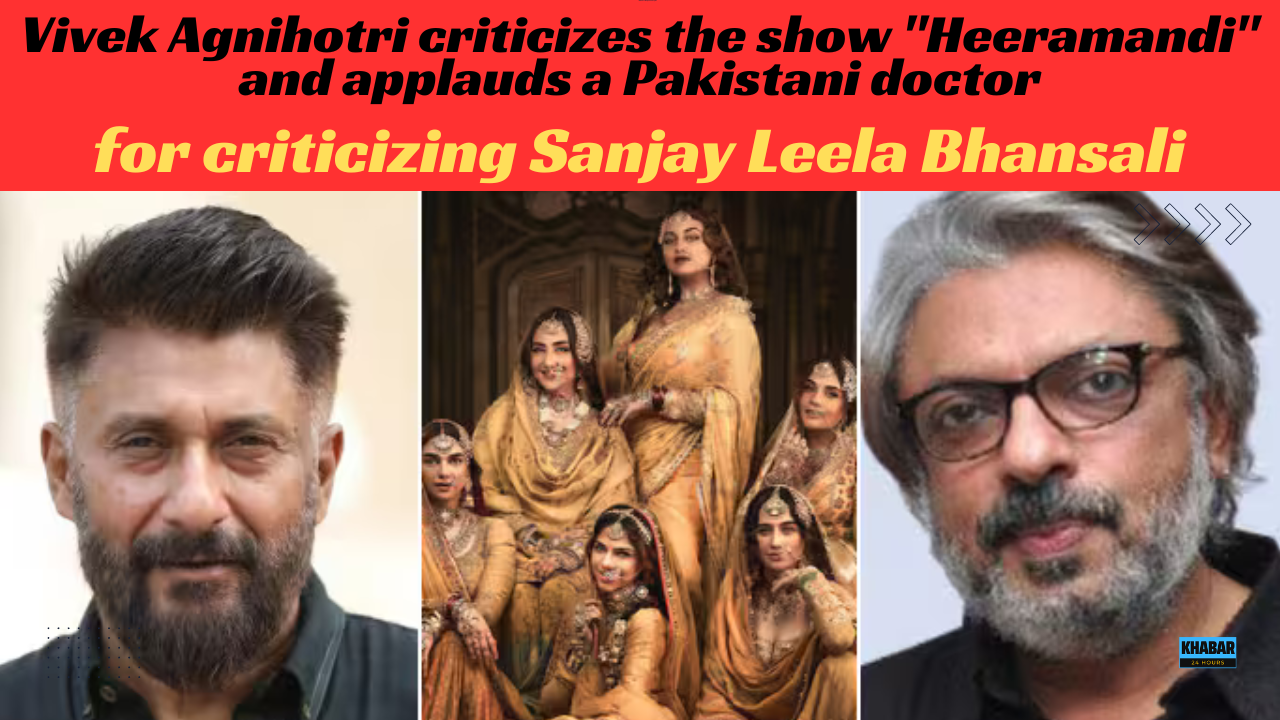Director and writer Vivek Agnihotri recently criticized Sanjay Leela Bhansali’s debut series, “Heeramandi: The Diamond Bazaar,” stating that Bollywood often glamorizes brothels and courtesans.
In a social media post, director and writer Vivek Agnihotri supported a critique by a Pakistani doctor of Sanjay Leela Bhansali’s new series “Heeramandi: The Diamond Bazaar.” Agnihotri highlighted Bollywood’s tendency to glamorize brothels and courtesans, questioning the accuracy of their portrayal in such productions.
Vivek Agnihotri criticized Bhansali’s “Heeramandi” series.
He retweeted Hamd Nawaz’s posts and commented, “A great critique by @_SophieSchol. Although I haven’t seen the show, I’ve visited Heeramandi in Lahore a few times. Bollywood tends to romanticize courtesans and brothels. It’s a sad portrayal because brothels have never been places of opulence, glamour, or beauty. They are symbols of human injustice, pain, and suffering. For those unaware, they should watch Shyam Benegal’s Mandi.”
He also raised some questions: “Does creativity allow us to glamorize human suffering? Is it acceptable to depict slum life as a life of abundance in films? Is it appropriate to show slum dwellers dressed as if they are attending a lavish wedding? Let’s discuss.”
Responding to the post, one person shared their opinion, “Anything in excess becomes unappealing. He seems to struggle to find a balance between creative freedom and reality (sic).” Another user commented, “Bollywood doesn’t just have a tendency. They are obsessed with romanticizing brothels, courtesans, etc., especially in some recent movies. However, I think this is more of an issue with SLB. His movies thrive on displaying opulence. Movies like Umrao Jaan and Bazaar were more balanced (sic).”
A third user expressed, “I watched parts of it, fast-forwarding, hoping to see some redeeming aspects from a brilliant filmmaker, beyond the grand sets, cinematography, and music, but I couldn’t find anything. The transformation of tawaifs en masse into patriotic revolutionaries bordered on the comical (sic).”
Recently, a viewer named Hamd pointed out historical inaccuracies in the show “Heeramandi” on social media. They wrote, “Just watched Heeramandi. Found everything but Heeramandi in it. I mean, either you don’t set your story in 1940s Lahore, or if you do, you don’t set it in the landscape of Agra, with Delhi’s Urdu, Lucknowi dresses, and a vibe from the 1840s. As a Lahori, I can’t let this slide (sic).”
Hamd further added, “To start with, where exactly is it set? Lake Como? Amalfi Coast? The most noticeable landmark still visible from every building in today’s remnants of Heera Mandi is the Shahi Qilla-Grand Mosque’s dome and minarets skyline. If you call it Lahore, show Lahore (sic).” Hamd delved into the web series’s depiction of social class, wealth distribution, spoken language, music, and fashion choices.

